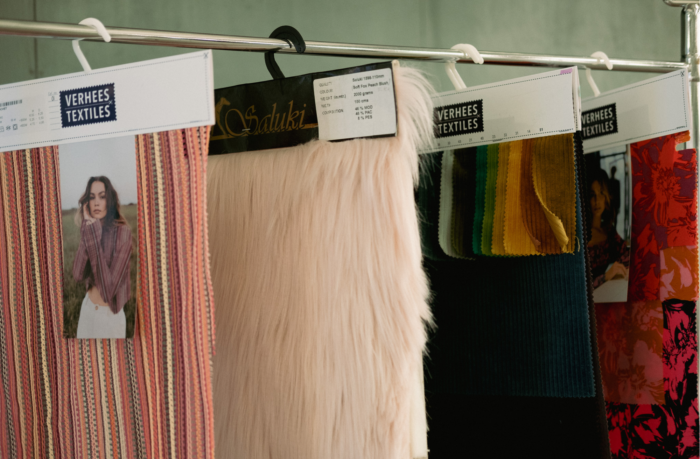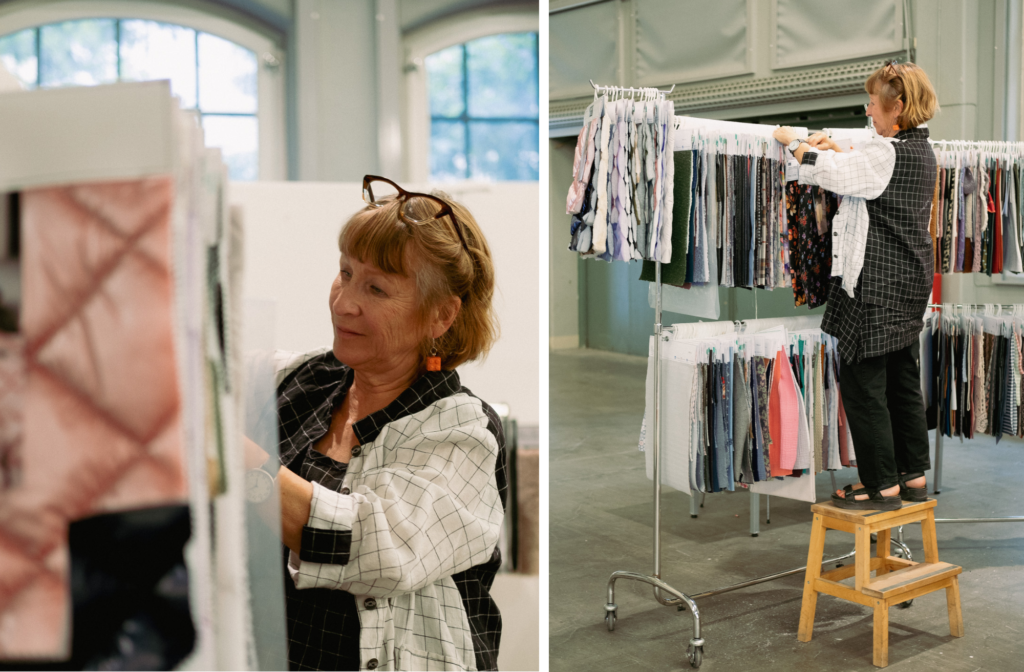
Can you briefly tell us about Pierre Henriet’s history and your role in the Swedish textile industry?
[Pierre Henriet recounts] For most of his life, my father was primarily active as a textile artisan, creating, among other things, batik clothing. When China opened up for trade in the late 80s, we travelled there together and bought silk fabrics, which we then sold to ateliers in Uppsala and the Stockholm area. The idea wasn’t sustainable enough to provide income for either of us, but a bit later, in ’94, I calculated, as an exercise in business economics, how many customers and how many velvet remnants I would need to sell to support myself. This idea wasn’t particularly brilliant either, but in my methodical attempts to work the market, primarily fabric stores and sewing ateliers, I quickly realised that many were requesting all kinds of animal-patterned fur fabrics, like Leopard, Ocelot, Tiger, etc. As luck would have it, I was able to source these fabrics in the Netherlands, and thus Fur-textiles Nederland became our first agency. Through them, we got in touch with a linen distributor, and gradually more and more agencies. Eva [Sundstén Henriet] joined the company in the early 00s, and together we let ourselves be inspired by exhibitors at Première Vision and Texworld, whom we then asked if they wanted to be represented in Sweden and Denmark. I’d like to think that what has inspired us has in turn inspired our customers, and that’s how it continues to be.

Eva Sundstén Henriet has worked with the company since the 00s. Here she represents the agency at the Nordic Fabric Fair in Stockholm Fashion District.
What specific textile products or materials does your company specialise in?
Initially, it was fur fabrics like Pile and Teddy, but Linen quickly became our main product, and a bit later also Hemp/Silk blends. Now our range is much broader and also includes functional fabrics, buttons with accessories, and ribbons.
Who are some of the main suppliers you currently represent?
No names mentioned, none forgotten.
Who are your primary customers and what industries do they represent?
An important part of our business is directed towards fabric stores, but the part that is most visible at our trade shows is aimed at all kinds of companies of various sizes that make clothes.

Some of Pierre Henriet’s customers explore and select fabrics during Nordic Fabric Fair.
Can you describe your typical process for the fabric’s journey from supplier to customer?
We receive a collection from our supplier and show it to our customer either during a visit or at a trade show. The customer selects samples of what they think fits into their upcoming collection, and if we’re lucky, they then buy sample metres for this. If we, and the customer, have even more luck, the garment sells well and a larger number of metres is ordered for production. In this context, I’d like to quote Ingemar Stenmark’s response in an interview about the importance of luck: “I don’t know how much impact luck has had on my results, but I’ve discovered that the more I train, the luckier I get.”
“In this context, I’d like to quote Ingemar Stenmark’s response in an interview about the importance of luck: I don’t know how much impact luck has had on my results, but I’ve discovered that the more I train, the luckier I get.”
How important are Stockholm Fashion District’s purchasing fairs, Nordic Fabric Fair and Textile Days, for this process?
Very important for both maintaining contact with all our customers and also showcasing ourselves to new customers.

Pierre Henriet exhibits at the Nordic Fabric Fair in Stockholm Fashion District twice a year.
We’ve heard that you have a close collaboration with your suppliers. Can you tell us more about your recent trip to Ireland?
Magee, whom we visited, is based in Donegal. They make, among other things, Donegal Tweed fabrics from Donegal. Besides getting to see and understand how their beautiful fabrics are made, we had time to drive around carefully on winding roads with steep slopes towards the sea where the sheep graze. The same sheep whose wool then becomes yarn and is dyed with inspiration from the magnificent nature. Impressive!

Eva Sundstén Henriet together with a representative from Magee, who accompanied Pierre Henriet to sell fabrics at Nordic Fabric Fair.
How does Pierre Henriet prepare for potential challenges in the textile industry?
Still with our fingertips on the fabrics and our eyes peeled! We trust that our curiosity and intuition will lead us right even now.
How do you view the future of the textile industry in Sweden?
Not everything needs to be cheap, and I believe that some production, both sewing and fabric manufacturing, can experience a revival, albeit on a smaller scale. Fashion, which is squeezed between artistic drive and commercial demands, is part of life itself and has the same vitality.